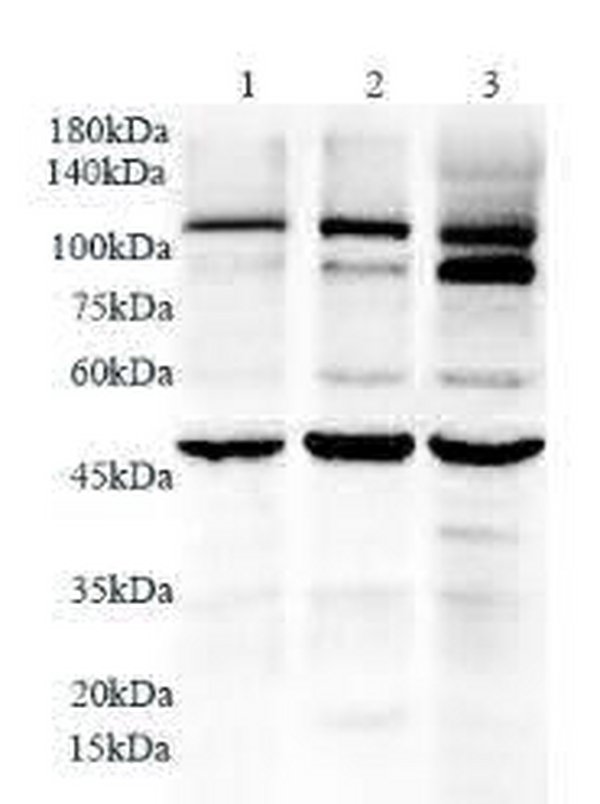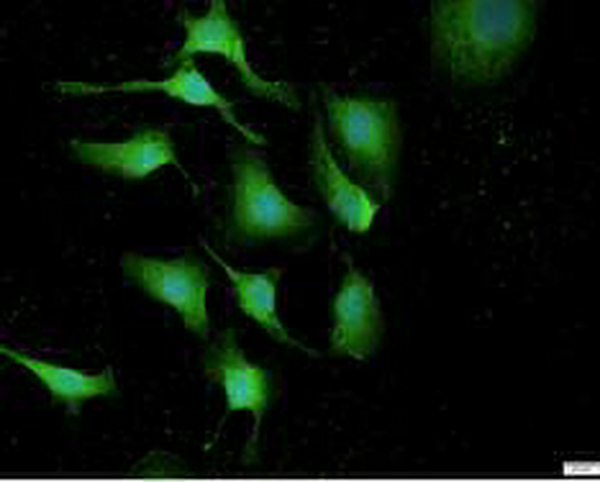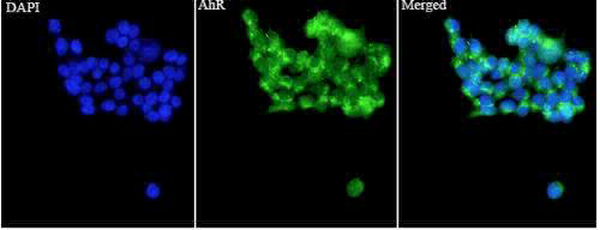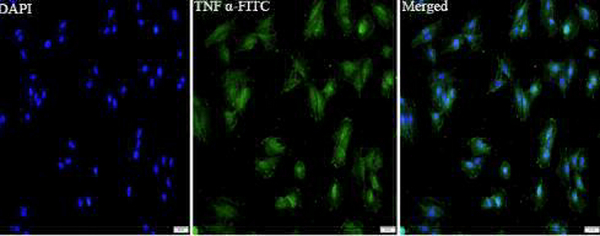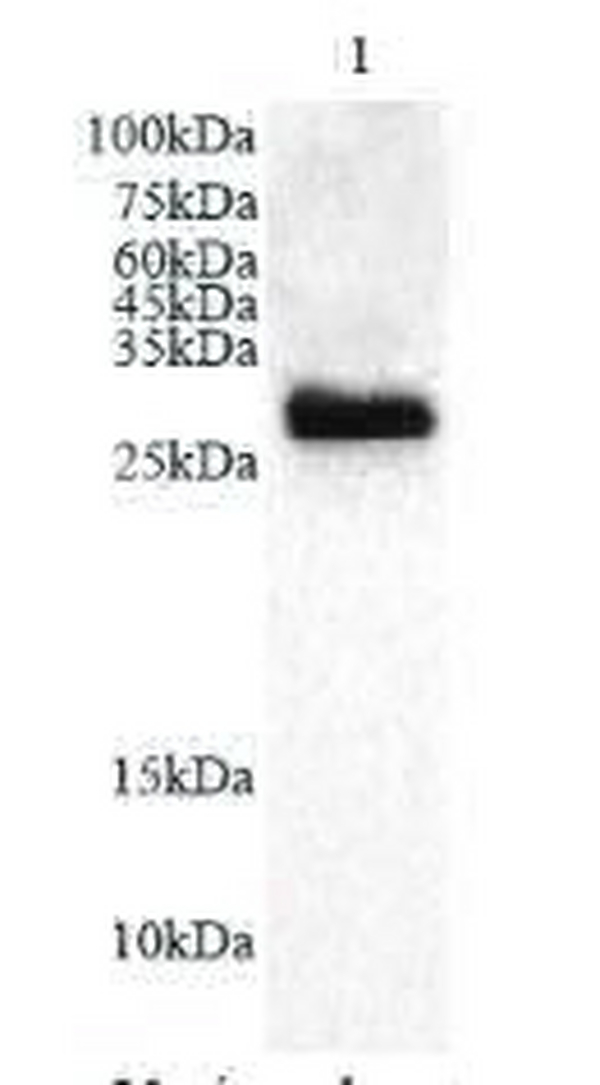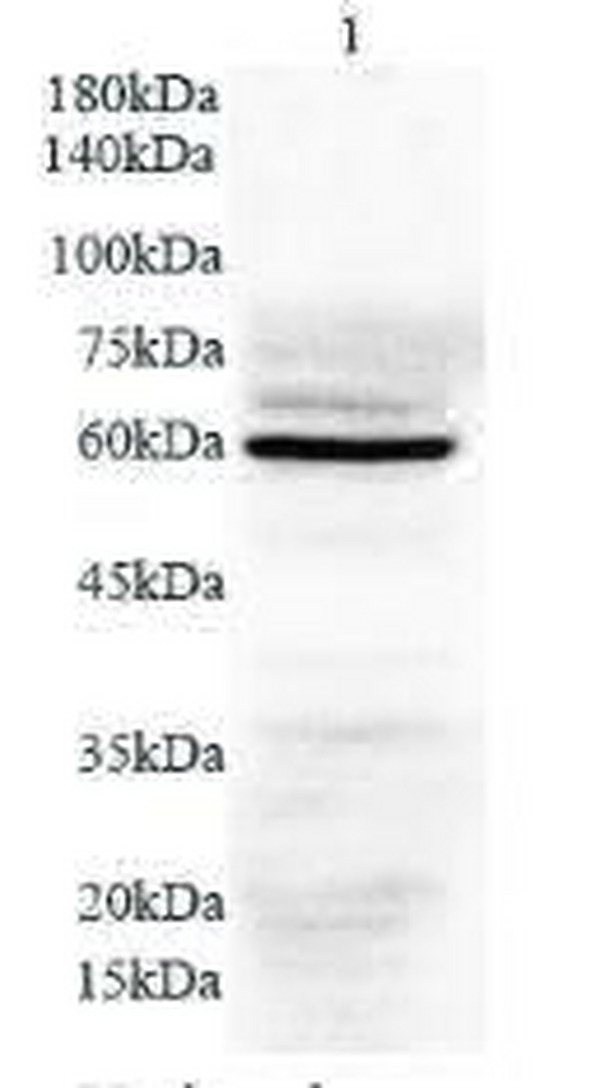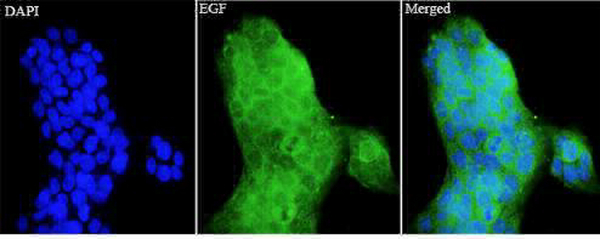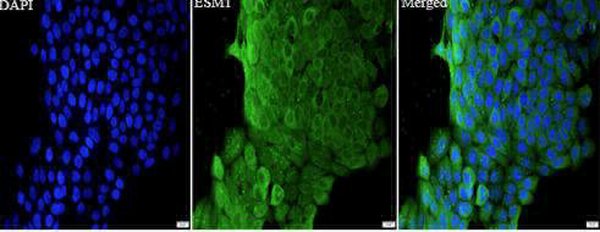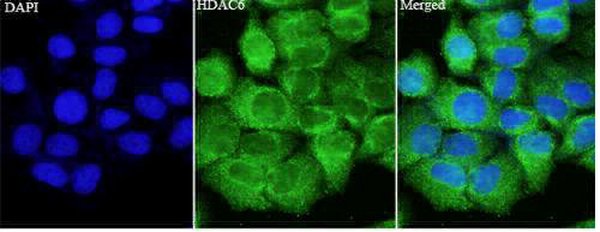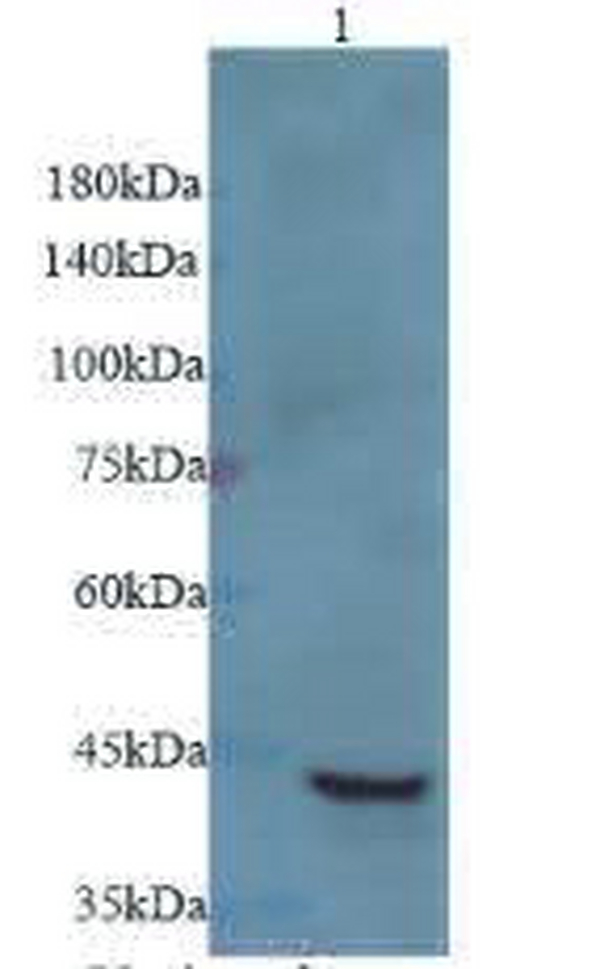QQ:3002763590
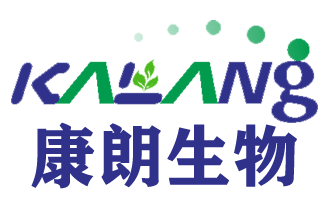

客服电话:021-61998208
Anti TLR7 polyclonal antibody
TLR7抗体
Anti TLR7 polyclonal antibodyKey component of innate and adaptive immunity. TLRs (Toll-like receptors) control host immune response against pathogens through recognition of molecular patterns specific of microorganisms. TLR7 is a nucleotide-sensing TLR which is activated by single-stranded RNA. Acts via MYD88 and TRAF6, leading to NF-kappa-B activation, cytokine secretion and the inflammatory response.
Anti PON3 polyclonal antibody
PON3抗体
Anti PON3 polyclonal antibodyParoxon is an organophosphorus anticholinesterase compound, used topically in the treatment of glaucoma. It is produced in vivo in mammals by microsomal oxidation of the insecticide parathion. Parathion is inert until transformed to paroxon. Paroxonase or PON is an arylesterase that is capable of hydrolyzing paroxon to produce p-nitrophenol. PONs are nonspecific and their classification is based not only on substrate specificity but also on tissue distribution, inhibition properties and physicochemical characteristics such as electrophoretic mobility and molecular weight. In contrast to PON1, which is expressed mainly in the liver, PON2 is expressed in a variety of mouse tissues, including the pancreas. PON3 is a associated with the high density lipoprotein fraction of serum. The genes which encode PON1-3 are physically linked and map to human chromosome 7q21.3.
Anti AhR polyclonal antibody
AhR抗体
Anti AhR polyclonal antibodyThe aryl hydrocarbon receptor (AhR) is a ligand-activated transcription factor that has been largely regarded as a mediator of xenobiotic metabolism [PMID:18483242]. It plays a part role in physiologic activities, including attenuation of the acute phase response, cytokine signaling, T helper (TH)17 immune cell differentiation, modulation of NF-κB activity, and regulation of hormonal signaling [PMID:20423157,18540824]. It also mediates transcription factor sequestering away from a gene promoter or tethering of the AhR to a transcription factor on a promoter. AHR calculated molecular masses differ by <10%, compared with the apparent molecular masses predicted from SDS-PAGE for the two receptors (105 and 95 kDa, respectively). (PMID: 8246913)
Anti TNFa polyclonal antibody
TNFa抗体
Anti TNFa polyclonal antibodyTNF, as also known as TNF-alpha, or cachectin, is a multifunctional proinflammatory cytokine that belongs to the tumor necrosis factor (TNF) superfamily. It is expressed as a 26 kDa membrane bound protein and is then cleaved by TNF-alpha converting enzyme (TACE) to release the soluble 17 kDa monomer, which forms homotrimers in circulation. It is produced chiefly by activated macrophages, although it can be produced by many other cell types such as CD4+ lymphocytes, NK cells, neutrophils, mast cells, eosinophils, and neurons. It can bind to, and thus functions through its receptors TNFRSF1A/TNFR1 and TNFRSF1B/TNFBR. This cytokine is involved in the regulation of a wide spectrum of biological processes including cell proliferation, differentiation, apoptosis, lipid metabolism, and coagulation. This cytokine has been implicated in a variety of diseases, including autoimmune diseases, insulin resistance, and cancer.
Anti NGF polyclonal antibody
NGF抗体
Anti NGF polyclonal antibodyBeta nerve growth factor (NGF) is critical for the survival and maintenance of sympathetic and sensory neurons and may play an important role in the regulation of the immune system (PMID 16842161). The presence of beta NGF in immune cells, endocrine cells, and the CNS limbic areas suggests that beta NGF may function as an intracellular messenger to regulate the body’s response to stress (PMID 19442684). Xeno-free Recombinant Human beta NGF is expressed in human 293 cells as a non-disulfide bonded homodimeric protein with an apparent molecular mass of 13 kDa. This product is produced in a human cell expression system with serum-free, chemically defined media.
Anti NEU4 polyclonal antibody
NEU4抗体
Anti NEU4 polyclonal antibodyNEU4, also named as LP5125, belongs to a family of glycohydrolytic enzymes, which remove terminal sialic acid residues from various sialo derivatives, such as glycoproteins, glycolipids, oligosaccharides, and gangliosides. It may function in lysosomal catabolism of sialylated glycoconjugates. NEU4 has a broad substrate specificity being active on glycoproteins, oligosaccharides and sialylated glycolipids.
Anti EGF polyclonal antibody
EGF抗体
Anti EGF polyclonal antibodyEpidermal growth factor (EGF) is a small 6 kD polypeptide and has six conserved cysteine residues that form three intramolecular disulfide bonds. Human EGF is synthesized as transmembrane precursor proteins (1207 amino acids), which are proteolytically cleaved to generate the 54 amino acid mature EGF.
Anti mouse Esm1 polyclonal antibody
mouse Esm1抗体
Anti mouse Esm1 polyclonal antibodyESM1 is a secreted dermatan sulfate proteoglycan which is predominantly expressed in the endothelial cells in human lung and kidney tissues. Expression of ESM1 is regulated by cytokines. ESM1 may have a role in lung endothelial cell-leukocyte interactions. The transcript contains multiple polyadenylation and mRNA instability signals. Two transcript variants encoding different isoforms have been found for this gene.
Anti HDAC6 polyclonal antibody
HDAC6抗体
Anti HDAC6 polyclonal antibodyHistone deacetylases(HDAC) are a class of enzymes that remove the acetyl groups from the lysine residues leading to the formation of a condensed and transcriptionally silenced chromatin. At least 4 classes of HDAC were identified. HDAC6 is a member of the class II mammalian histone deacetylases. It possesses two separate putative catalytic domains. Both catalytic domains are fully functional HDACs and contribute independently to the overall activity of HDAC6 protein. A very potent NES is present at the amino-terminus of HDAC6, which was found to play an important role in regulating the shuttling of HDAC6 protein between cytoplasm and nucleus. The shuttling process may be a critical regulatory mechanism of HDAC6 function. The expression of HDAC6 is tightly linked to the state of cell differentiation. HDAC6 may participate in coordinating expression of a group of genes involved in the remodelling of chromatin during cell differentiation. HDAC6 has some splic
Anti RRM2B polyclonal antibody
RRM2B抗体
Anti RRM2B polyclonal antibodyThis gene encodes the small subunit of a p53-inducible ribonucleotide reductase. This heterotetrameric enzyme catalyzes the conversion of ribonucleoside diphosphates to deoxyribonucleoside diphosphates. The product of this reaction is necessary for DNA synthesis. Mutations in this gene have been associated with autosomal recessive mitochondrial DNA depletion syndrome, autosomal dominant progressive external ophthalmoplegia-5, and mitochondrial neurogastrointestinal encephalopathy. Alternatively spliced transcript variants have been described.[provided by RefSeq, Feb 2010].
最新动态
-
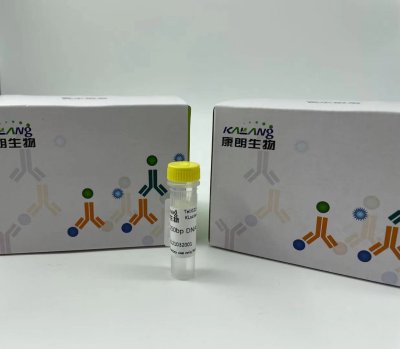
Anti-GNGT1 KL20092-001(50ul)
2021-10-11 -

Anti-GNGT1 antibody(50ul) KL20093-001
2021-10-11 -
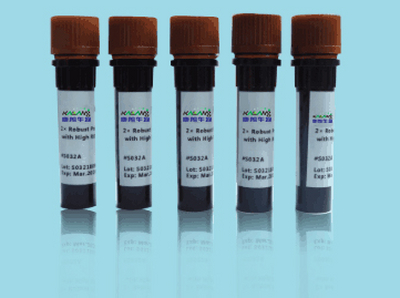
MUC5AC (PT2058) mouse Monoclonal Antibody
2021-01-06 -

mOrange mouse Monoclonal Antibody(Mix)
2021-01-05
热门标签
- Histone H3 rabbit Polyclonal Antibody Histone H3抗体
- EGFR rabbit Polyclonal Antibody EGFR抗体
- Cy3 Conjugated
- AbFluor™ 555 Conjugated
- AbFluor™ 680 Conjugated
- AbFluor™ 350 Conjugated
- AbFluor™ 647 Conjugated
- AbFluor™ 594 Conjugated
- AbFluor™ 405 Conjugated
- Cy5 Conjugated
- AbFluor™ 488 Conjugated
- Cyclophilin B抗体 Cyclophilin B Monoclonal Antibody(2B10)
- COX IV抗体 COX IV Monoclonal Antibody(6C8)
- PCNA抗体 PCNA Monoclonal Antibody(12D10)
- FAK rabbit Polyclonal Antibody FAK抗体
邮箱:3002763590@qq.com
电话:021-61998208

扫码关注微信公众号



